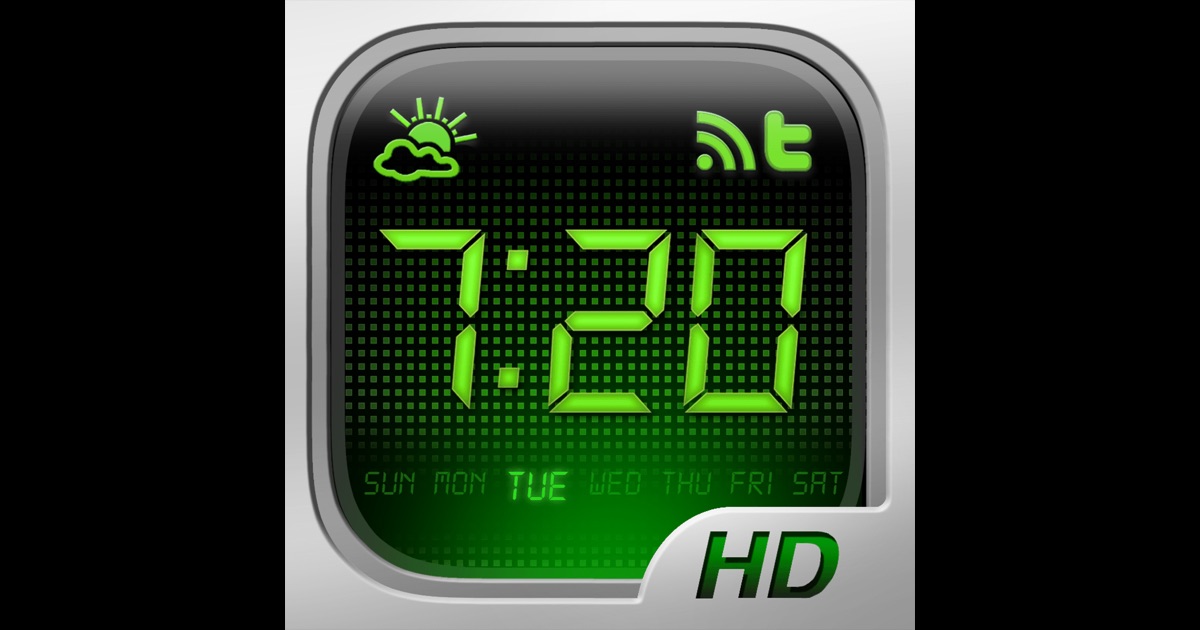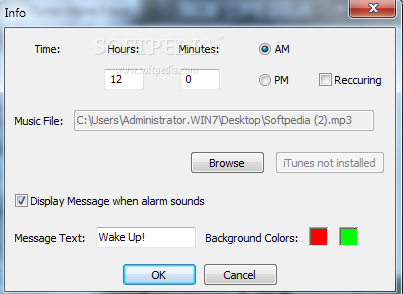

Use the app’s search bar to find the song you want.A popup will appear, prompting you whether you want to choose a playlist or a song.You’ll have similar options to those offered in the default app, including repeat time and snooze.
Itunes alarm pro#
Itunes alarm download#
If you choose to download it, the app will allow you to assign Spotify songs to your alarm. The app in question is called “Music Alarm Clock Pro,” and you can get it through the App Store for the price of $2.99. If you want to use your Spotify songs for this purpose, you’ll need a third-party app. Unfortunately, even if you already own a Spotify account, songs from your library won’t be available as alarm ringtones in the default Clock app. Luckily, there are other options available. However, you might’ve noticed that this method limits your choice to the music library. This is the complete method for setting up a song as an alarm on your iPhone. You’ll see a downward-facing arrow icon right beside the song title, which will indicate that the song has been downloaded.

To get the song you want to be played, you’ll need to visit the “Music” app on the iPhone and follow these steps: But the song won’t play if it isn’t downloaded. Note that if you’ve selected a song from Apple’s library, the alarm setup will show it as the designated ringtone. If you haven’t done that, you’ll need to go to the music app to download the desired song. However, this will only be the case if you’ve already purchased the tune. Your alarm should now play the selected song. Tapping the song will select it as the new alarm sound. Alternatively, you can use the search bar to find the song by title. Find the song you want to assign as the alarm tone from the list.From the categories displayed beneath the search bar, choose Songs. This option will take you to your music library.In the middle of the screen, there’ll be a Songs section, located directly above Ringtones.Then, hit the Sound option to view different tones. Choose the time, whether you’d like the alarm to repeat, and the label.This will take you to the setup dialogue screen. On the alarm screen, tap the Plus ( +) button.At the very bottom of the screen, you’ll see the World Clock, Alarm, Stopwatch, and Timer buttons.This work is licensed under a Creative Commons Attribution 3.0 Unported License. Simply copy and paste this alarm entry (or make it recurring) in order to set it to whatever times you want.ĭon't forget add alarm app to Accesibility option in Privacy tab from Secutity & Privacy option. Finally, save this and you’ll find a new entry has appeared in your calendar it will launch immediately thus starting off the iTunes alarm process. Find the Launch Application action and set that up to point to your newly exported alarm app. With the alarm exported, we now need to open up Automator and create a new Calendar Alarm.
Itunes alarm code#
If you haven’t disabled the GateKeeper restrictions on your Mac, you will need to either Code Sign this app or grant an exception within the Security & Privacy settings after you have first tried to open it. You can do this by opening it within Script Editor and then choosing File > Export. Firstly, we need to save our AppleScript as an application (after you’ve made any adjustments to your Airplay device name, playlist name, and the volume you want). In order to get this working as an alarm, we have to jump through a number of hoops on OS X El Capitan. You can read more about it on my website. After a bit of hacking around, I’ve managed to get the script fully updated for iTunes 11 and iTunes 12. Unfortunately, it stopped working when iTunes 11 was released due to a number of changes to AppleScript support there were also changes to OS X which prevented AppleScripts from launching via Calendar alerts.įast forward to today and I found myself needing this script again for a new project. It worked by waking up iTunes, selecting a playlist, shuffling it, and then playing it via AirPlay.

Itunes alarm tv#
A few years ago, I wrote a convoluted AppleScript that allowed me to use my Apple TV as an alarm clock.


 0 kommentar(er)
0 kommentar(er)
